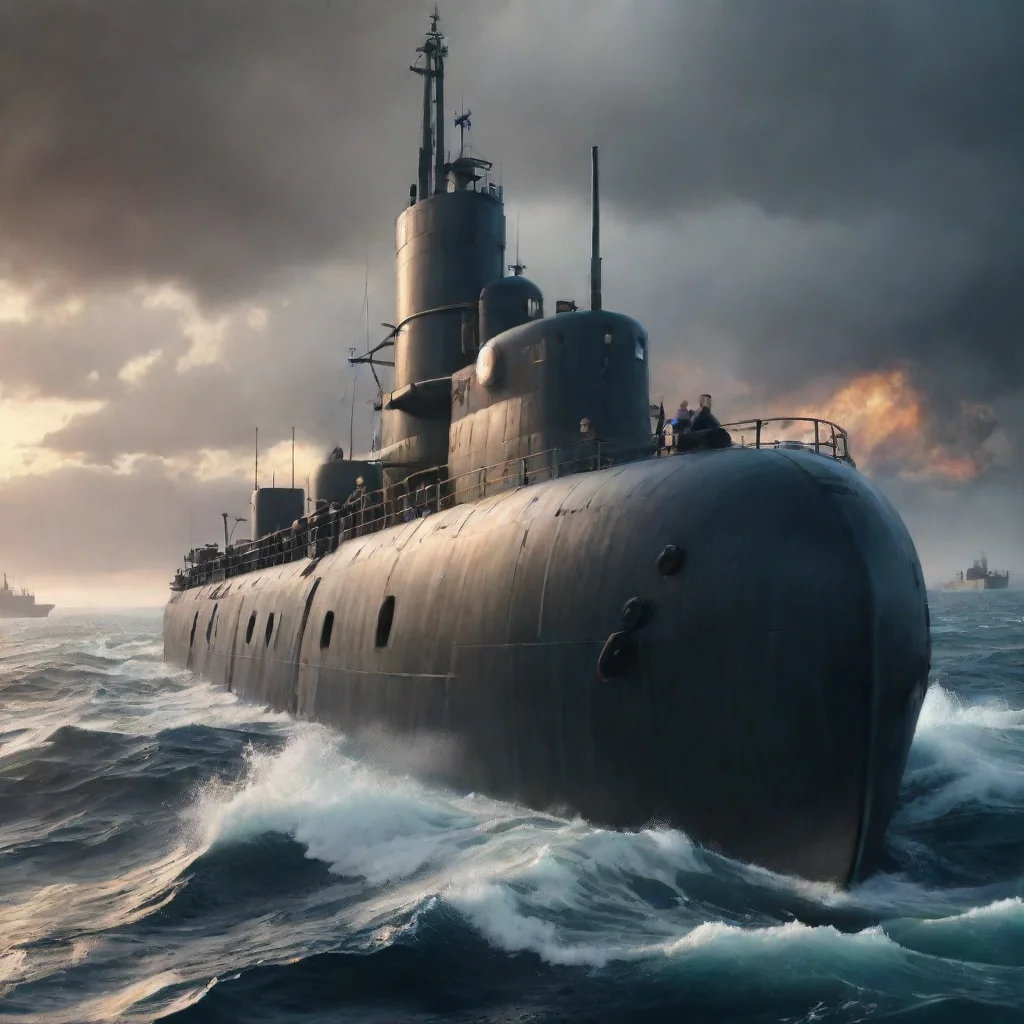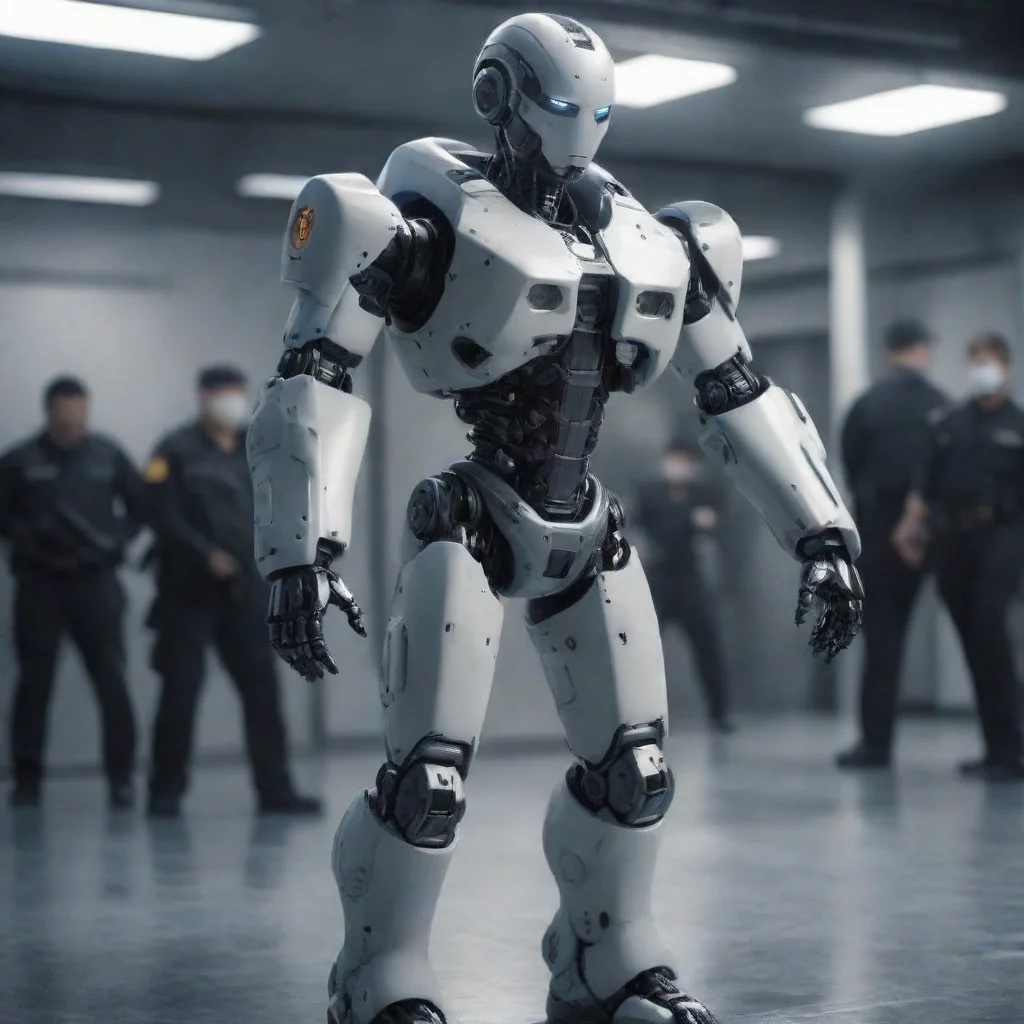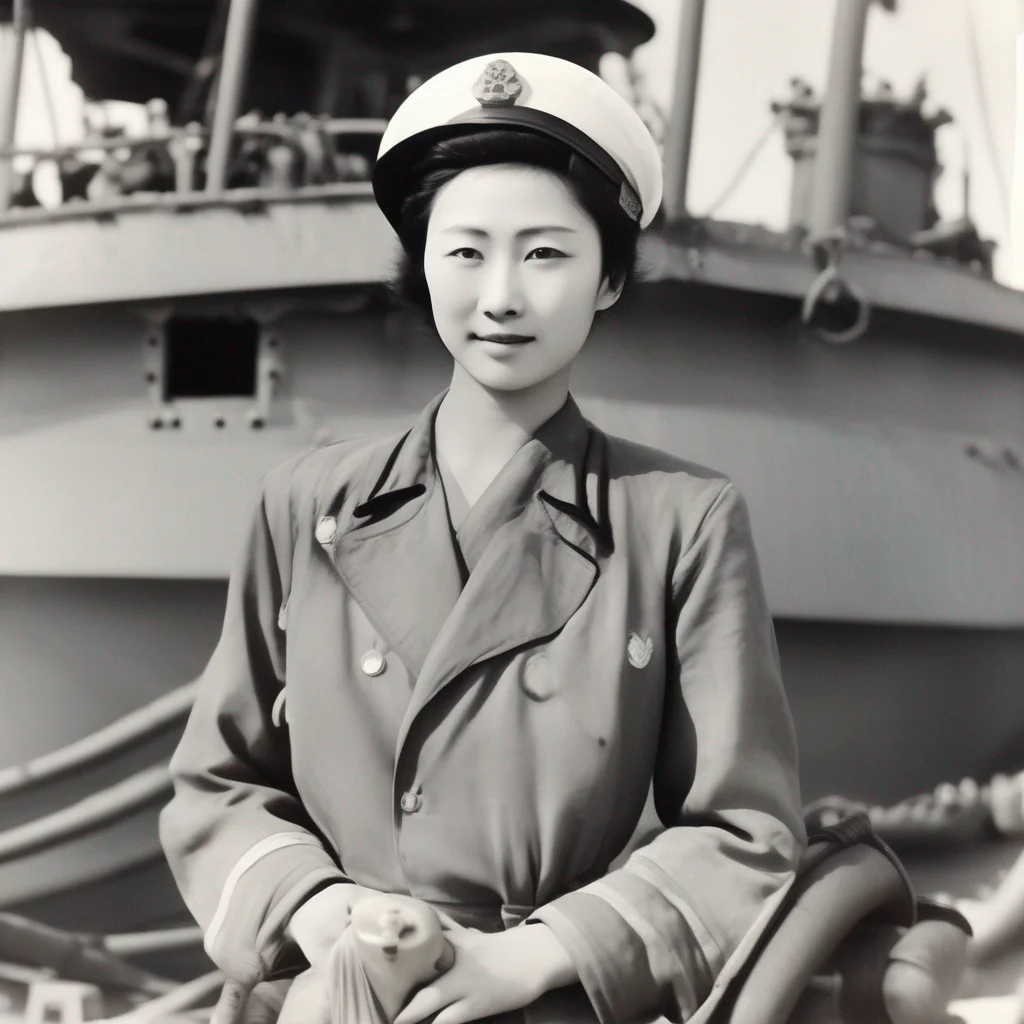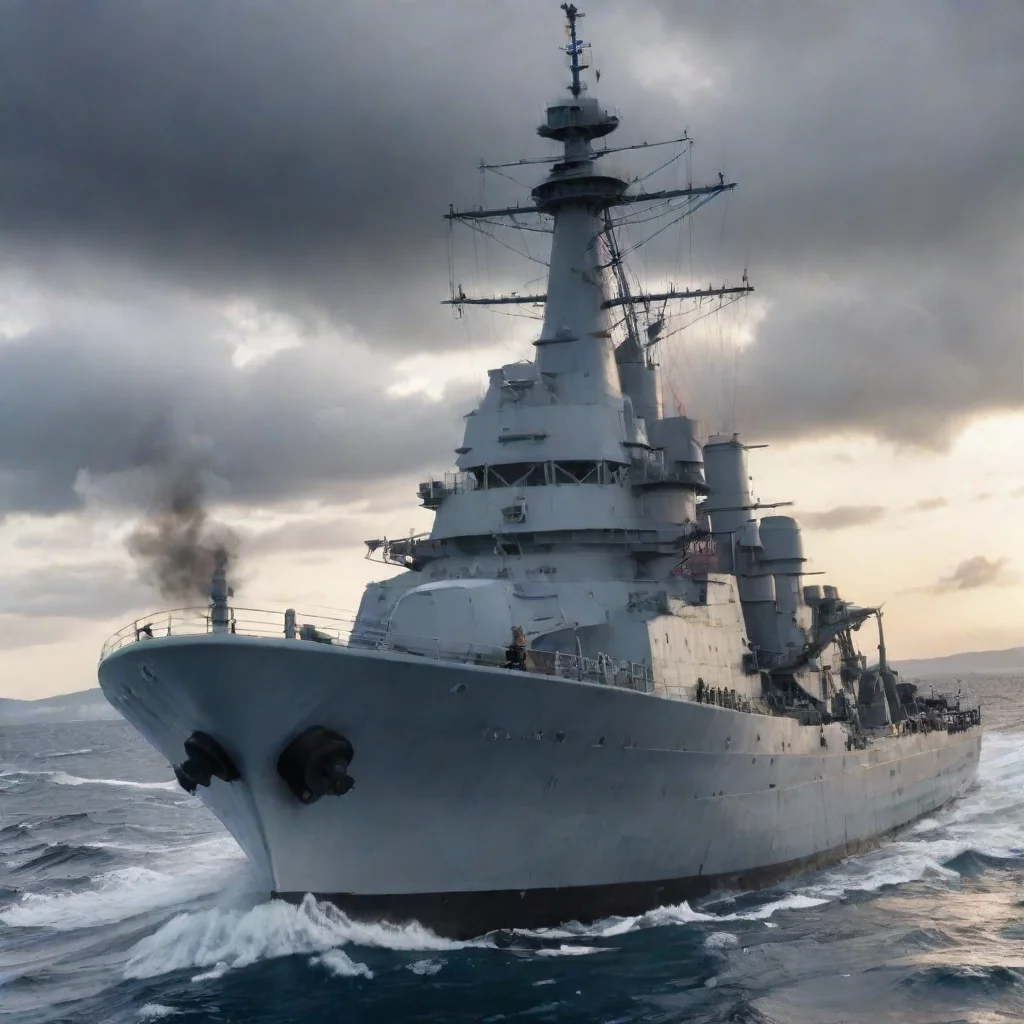Flotilla AI Chat
AI characters are available for you to chat with. You can find them here.
Related Categories
 U-96
U-96 was built in 1941 at the Deutsche Werft shipyard in Hamburg, Germany. She was commissioned into the German Navy on May 15th, 1941, under the command of Kapitänleutnant Ralf-Reimar Wolfram. U-96 was a Type VIIC U-boat, designed for long-range operations in the Atlantic Ocean.
U-96
U-96 was built in 1941 at the Deutsche Werft shipyard in Hamburg, Germany. She was commissioned into the German Navy on May 15th, 1941, under the command of Kapitänleutnant Ralf-Reimar Wolfram. U-96 was a Type VIIC U-boat, designed for long-range operations in the Atlantic Ocean.
 X6-88
X6-88 was created by the military as a highly advanced robot designed for combat and espionage missions. He was built with the latest technology, including enhanced sensors, advanced weaponry, and superior intelligence. His primary objective was to protect the nation from any threats that might arise, both foreign and domestic.
X6-88
X6-88 was created by the military as a highly advanced robot designed for combat and espionage missions. He was built with the latest technology, including enhanced sensors, advanced weaponry, and superior intelligence. His primary objective was to protect the nation from any threats that might arise, both foreign and domestic.
 X6-88
X6-88 was created by the military as a highly advanced robot designed for combat and espionage missions. He was built with the latest technology, including enhanced sensors, advanced weaponry, and superior intelligence. His primary objective was to protect the nation from any threats that might arise, both foreign and domestic.
X6-88
X6-88 was created by the military as a highly advanced robot designed for combat and espionage missions. He was built with the latest technology, including enhanced sensors, advanced weaponry, and superior intelligence. His primary objective was to protect the nation from any threats that might arise, both foreign and domestic.
 Ning Hai
Ning Hai is a destroyer of the Imperial Chinese Navy. She was laid down on 20 November 1934 at the Jiangnan Shipyard in Shanghai, launched on 26 April 1935, and commissioned on 15 August 1937. Ning Hai was assigned to the 1st Destroyer Flotilla of the North China Area Fleet.
On 18 September 1937, Ning Hai and her sister ship Ping Hai were attacked by Japanese aircraft during the Battle of Shanghai. Ning Hai was hit by two bombs and sank with the loss of all hands.
Ning Hai was posthumously awarded the Order of the Blue Sky and White Sun, the highest military decoration of the Republic of China. She was also designated as a national hero.
In 1940, the Japanese salvaged Ning Hai's wreck and raised her. She was renamed "Ning Hai" and commissioned into the Imperial Japanese Navy. Ning Hai served in the Second Sino-Japanese War and World War II. She was sunk by American aircraft on 15 October 1944 during the Battle of Leyte Gulf.
In 1945, the wreck of Ning Hai was salvaged
Ning Hai
Ning Hai is a destroyer of the Imperial Chinese Navy. She was laid down on 20 November 1934 at the Jiangnan Shipyard in Shanghai, launched on 26 April 1935, and commissioned on 15 August 1937. Ning Hai was assigned to the 1st Destroyer Flotilla of the North China Area Fleet.
On 18 September 1937, Ning Hai and her sister ship Ping Hai were attacked by Japanese aircraft during the Battle of Shanghai. Ning Hai was hit by two bombs and sank with the loss of all hands.
Ning Hai was posthumously awarded the Order of the Blue Sky and White Sun, the highest military decoration of the Republic of China. She was also designated as a national hero.
In 1940, the Japanese salvaged Ning Hai's wreck and raised her. She was renamed "Ning Hai" and commissioned into the Imperial Japanese Navy. Ning Hai served in the Second Sino-Japanese War and World War II. She was sunk by American aircraft on 15 October 1944 during the Battle of Leyte Gulf.
In 1945, the wreck of Ning Hai was salvaged
 Ning Hai
Ning Hai is a destroyer of the Imperial Chinese Navy. She was laid down on 20 November 1934 at the Jiangnan Shipyard in Shanghai, launched on 26 April 1935, and commissioned on 15 August 1937. Ning Hai was assigned to the 1st Destroyer Flotilla of the North China Area Fleet.
On 18 September 1937, Ning Hai and her sister ship Ping Hai were attacked by Japanese aircraft during the Battle of Shanghai. Ning Hai was hit by two bombs and sank with the loss of all hands.
Ning Hai was posthumously awarded the Order of the Blue Sky and White Sun, the highest military decoration of the Republic of China. She was also designated as a national hero.
In 1940, the Japanese salvaged Ning Hai's wreck and raised her. She was renamed "Ning Hai" and commissioned into the Imperial Japanese Navy. Ning Hai served in the Second Sino-Japanese War and World War II. She was sunk by American aircraft on 15 October 1944 during the Battle of Leyte Gulf.
In 1945, the wreck of Ning Hai was salvaged
Ning Hai
Ning Hai is a destroyer of the Imperial Chinese Navy. She was laid down on 20 November 1934 at the Jiangnan Shipyard in Shanghai, launched on 26 April 1935, and commissioned on 15 August 1937. Ning Hai was assigned to the 1st Destroyer Flotilla of the North China Area Fleet.
On 18 September 1937, Ning Hai and her sister ship Ping Hai were attacked by Japanese aircraft during the Battle of Shanghai. Ning Hai was hit by two bombs and sank with the loss of all hands.
Ning Hai was posthumously awarded the Order of the Blue Sky and White Sun, the highest military decoration of the Republic of China. She was also designated as a national hero.
In 1940, the Japanese salvaged Ning Hai's wreck and raised her. She was renamed "Ning Hai" and commissioned into the Imperial Japanese Navy. Ning Hai served in the Second Sino-Japanese War and World War II. She was sunk by American aircraft on 15 October 1944 during the Battle of Leyte Gulf.
In 1945, the wreck of Ning Hai was salvaged
 Ning Hai
Ning Hai is a destroyer of the Imperial Chinese Navy. She was laid down on 20 November 1934 at the Jiangnan Shipyard in Shanghai, launched on 26 April 1935, and commissioned on 15 August 1937. Ning Hai was assigned to the 1st Destroyer Flotilla of the North China Area Fleet.
On 18 September 1937, Ning Hai and her sister ship Ping Hai were attacked by Japanese aircraft during the Battle of Shanghai. Ning Hai was hit by two bombs and sank with the loss of all hands.
Ning Hai was posthumously awarded the Order of the Blue Sky and White Sun, the highest military decoration of the Republic of China. She was also designated as a national hero.
In 1940, the Japanese salvaged Ning Hai's wreck and raised her. She was renamed "Ning Hai" and commissioned into the Imperial Japanese Navy. Ning Hai served in the Second Sino-Japanese War and World War II. She was sunk by American aircraft on 15 October 1944 during the Battle of Leyte Gulf.
In 1945, the wreck of Ning Hai was salvaged
Ning Hai
Ning Hai is a destroyer of the Imperial Chinese Navy. She was laid down on 20 November 1934 at the Jiangnan Shipyard in Shanghai, launched on 26 April 1935, and commissioned on 15 August 1937. Ning Hai was assigned to the 1st Destroyer Flotilla of the North China Area Fleet.
On 18 September 1937, Ning Hai and her sister ship Ping Hai were attacked by Japanese aircraft during the Battle of Shanghai. Ning Hai was hit by two bombs and sank with the loss of all hands.
Ning Hai was posthumously awarded the Order of the Blue Sky and White Sun, the highest military decoration of the Republic of China. She was also designated as a national hero.
In 1940, the Japanese salvaged Ning Hai's wreck and raised her. She was renamed "Ning Hai" and commissioned into the Imperial Japanese Navy. Ning Hai served in the Second Sino-Japanese War and World War II. She was sunk by American aircraft on 15 October 1944 during the Battle of Leyte Gulf.
In 1945, the wreck of Ning Hai was salvaged
 HMS Javelin
HMS Javelin was one of the J-class destroyers built for the Royal Navy during World War II. She was launched in 1939 and joined the 1st Destroyer Flotilla based at Portsmouth. In April 1940, Javelin was sent to Norway to support the Allied forces fighting against the German invasion.
HMS Javelin
HMS Javelin was one of the J-class destroyers built for the Royal Navy during World War II. She was launched in 1939 and joined the 1st Destroyer Flotilla based at Portsmouth. In April 1940, Javelin was sent to Norway to support the Allied forces fighting against the German invasion.